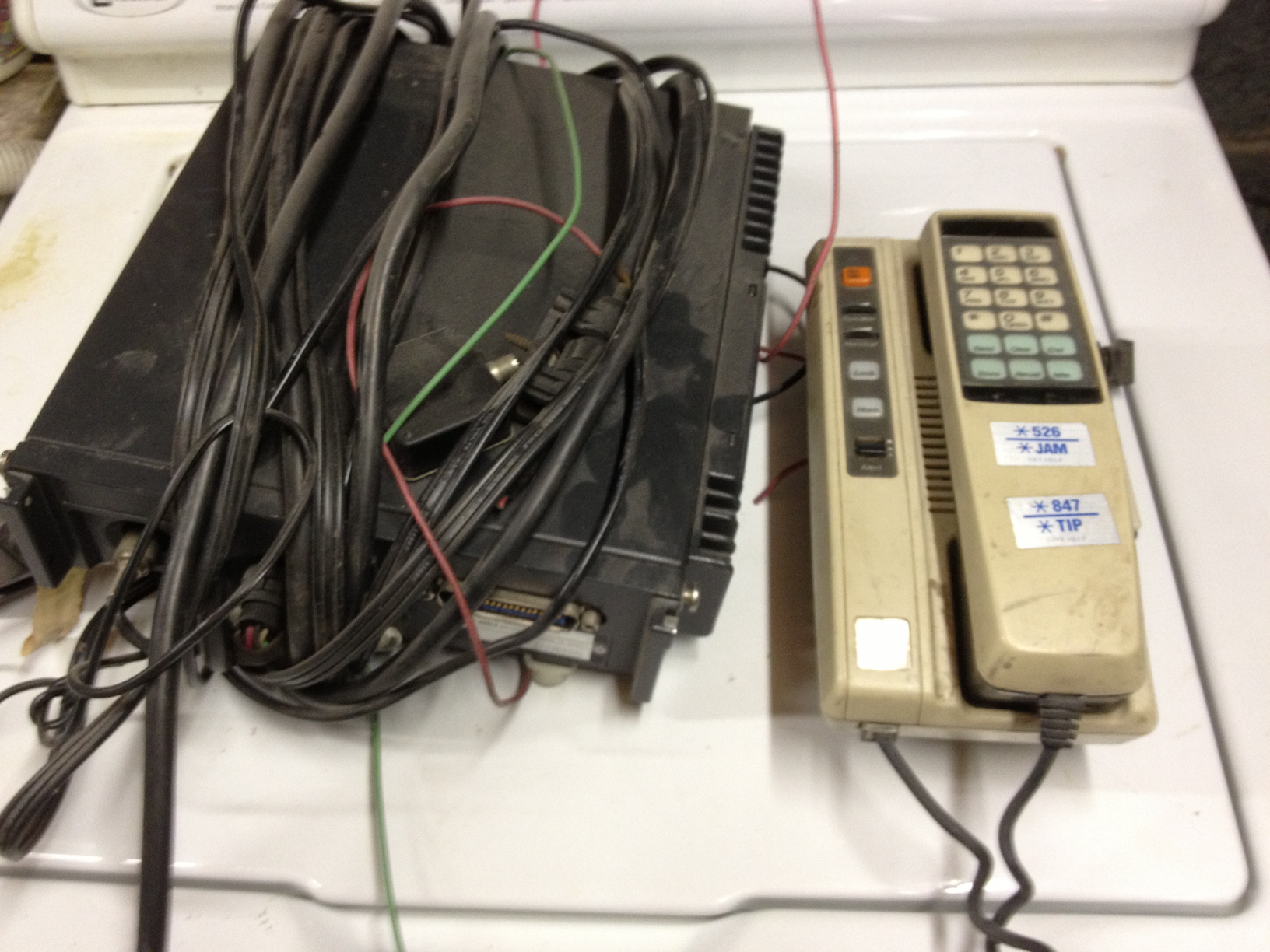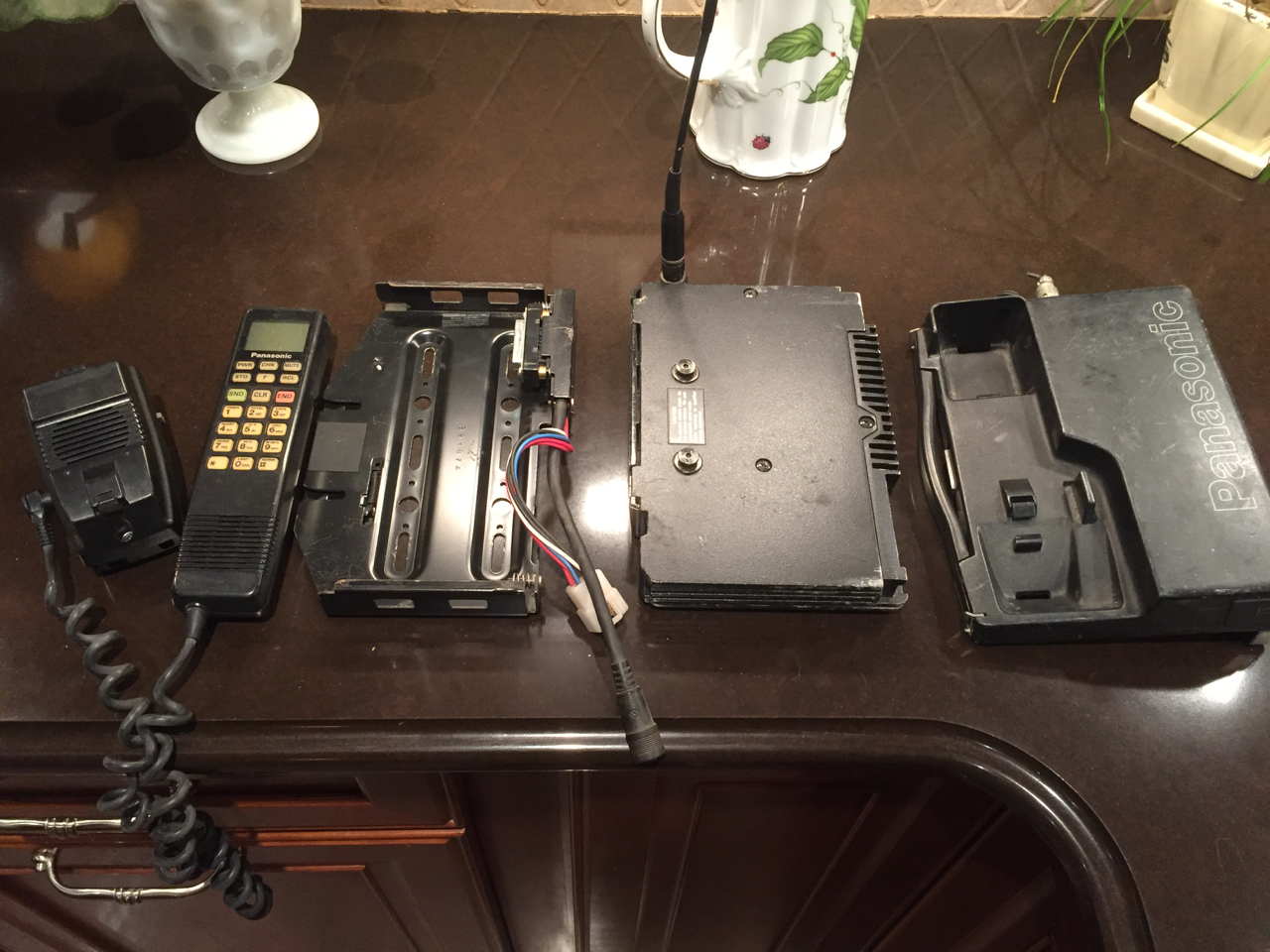This is an early AMPS cellular phone. AMPS, which is an acronym for Advanced Mobile Phone Service, was the first generation of cell phone and was made available around 1983. AMPS is an analog technology. The entire system was analog and there was no encryption or encoding. Anyone with an 800 MHz scanner could eavesdrop on cellular phone conversations. Still, AMPS was a huge improvement on the older technology such as MTS, Mobile Telephone service and IMTS, Improved Mobile Telephone Service. MTS is old technology that first went into service in the late 1940s.
Sometime in the late 1980s and 1990s, cloning cell phones became pretty common. A cloned cell phone was one that illegally used the credentials of a legal user. Since there was no security on the transmissions, cloners would "listen" for legal cell phones to transmit their credentials, which consisted of a serial number and the user's mobile phone number. The cloner would intercept the transmission, and burn the codes into a phone, which he then resells. The user of the cloned phone would never receive a bill since that phone's activity was billed to a valid account.
At that time, providers were either "wireline" or "non-wireline." A wireline provider was the cellular operator who was also the operator of the local, wired telephone service. The non-wireline provider were competitors who were not the local telephone company.
This is my dad's AMPS cell phone system that he installed in his 1976 Chrysler New Yorker Brougham somewhere around 1984.

Cellular carriers in the United States phased out AMPS in 2008. While innovative when it was introduced, the analog technology used far too much bandwidth to be practical in the 21st century. So while I still have this AMPS system, as well as the Panasonic EJB-114 that I bought in 1987, neither can do more than light up when connected to power.
This is the entire Panasonic EJB-114 system that I have, except for the cigarette lighter power cord for using and recharging when in portable mode, and the interconnecting cables for installing the car kits. I have them, but they're not pictured.

The EJB-114 was interesting in that it was a transportable cell phone in that it could be carried and was battery powered. When I carried it with me, I packed it into my briefcase, of which it required about half of the space available. But, it was portable, a very unusual situation in the late 1980s when having any cell phone was rare. When configured for transportable use, it looked like this.

I also had two car kits for it which allowed it to be mounted and used hands-free in either of my cars by simply disconnecting the transceiver from the base and clicking the transceiver into a frame mounted in the trunk. The handset would be plugged onto a receiver inside the passenger compartment which also contained a speaker. A small microphone would be clipped to the sun visor allowing the phone to be used hands-free. No Blutooth required! A good thing since Bluetooth was still a few years into the future. This is the handset mounted on its receiver that would be installed near the driver and the transceiver mounted in its frame would be installed in the trunk. I had both of my car kits installed so that the frame was hung under the rear parcel shelf on the driver's side of the car. A little easier for me to reach when moving the phone from car to car or from the car to portable mode.

This is the 1976 New Yorker Brougham where the first phone was installed. The Panasonic phone had one car kit installed in Isabella, my 1983 Imperial, there's a tab to show that car's web pages. The other car kit was installed in my 1972 Imperial LeBaron and then later when replaced the 72 Imperial I moved the kit to a 1978 Chrysler Lebaron. I don't have a page for either LeBaron. I don't even know if I have photos of those cars.

